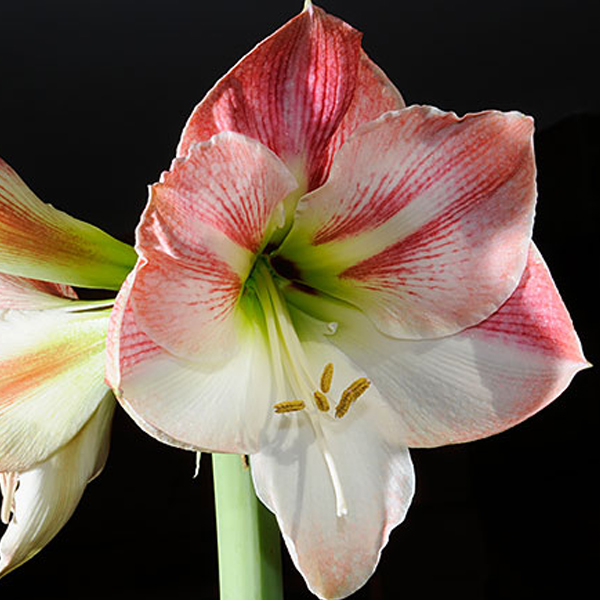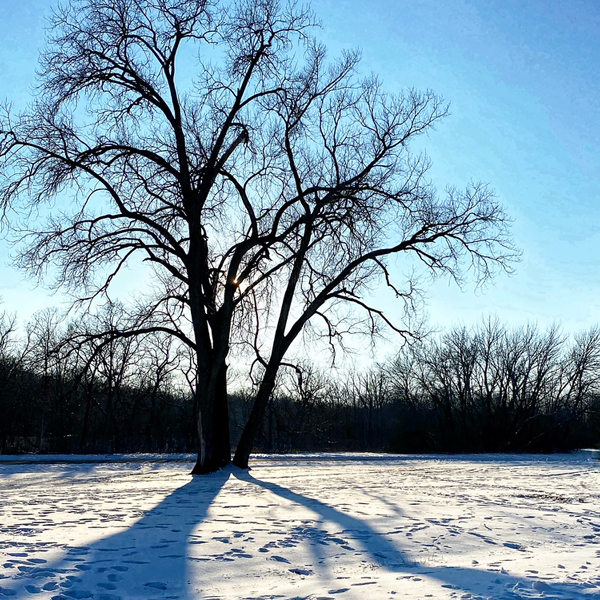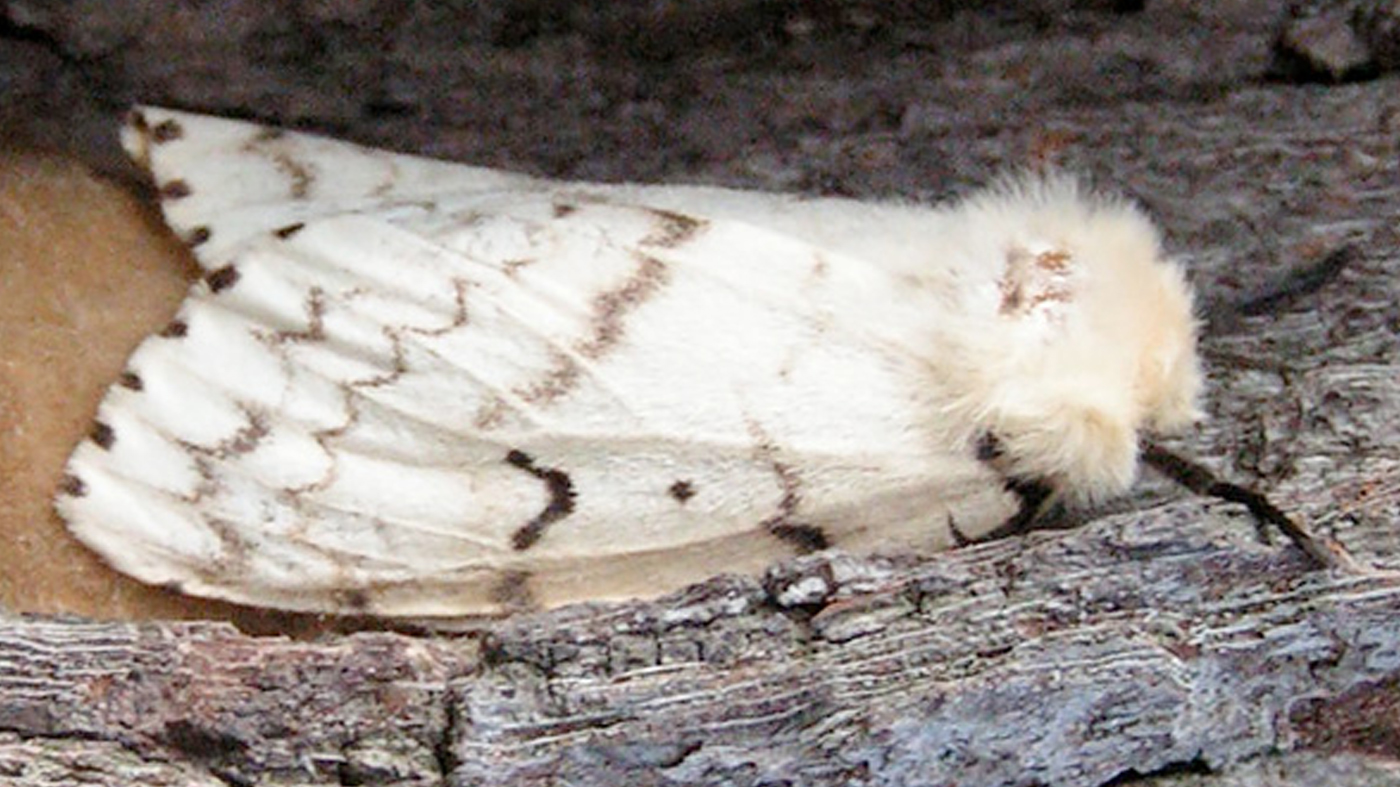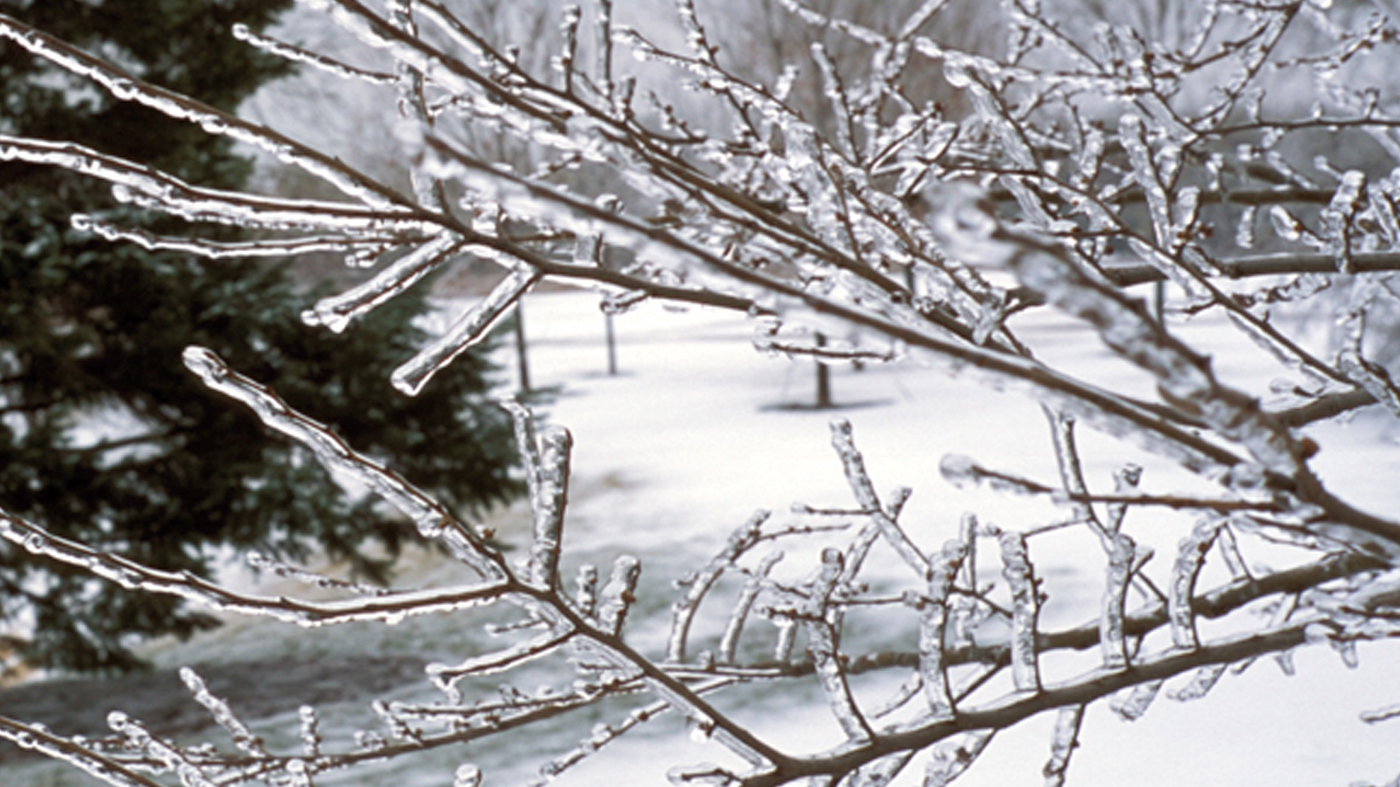

February
February marks the final full month of meteorological winter. As days slowly grow longer, spells of unseasonably warm weather may fool people as well as plants into venturing out too soon. Winter still reigns in February, making it a month for gardeners to respond to the season’s challenges, plan for the growing year ahead, and tend to indoor plants and seed starting.



Garden To-Do List
De-ice with caution
If necessary, continue to use de-icing products on walkways and driveways. Because de-icing products may cause landscape and environmental problems, consider broadcasting sand on slippery surfaces. Be careful not to use too much sand, however, because it may clog catch basins and storm drains.
Additional tips:
- Follow label directions when using de-icing products.
- Shovel snow before using de-icing products.
- When clearing driveways or shoveling walks, distribute snow loads equitably around trees, shrubs, and garden beds. Try to avoid piling treated snow on trees and shrubs.
- Find additional information on handling icy walkways and driveways
Keep planning
Continue to peruse seed, bulb, and nursery catalogs to help you plan your garden for the upcoming year. Another great source are the plant sales sponsored by local garden clubs, as well as sales held throughout the year at the Garden.
Tread lightly
Avoid excessive walking on the lawn in winter. This can compress the soil and may damage grass that emerges in spring.
Tree and Shrub Care

Pruning tips
Weather permitting, late February is an ideal time to heavily prune large woody plants that are fully dormant. The absence of leaves on deciduous trees also makes it easier to see their branching structure.
- If temperatures are unusually warm, avoid pruning trees that will “bleed,” i.e., discharge large amounts of water, such as elms, maples, and birches. Prune these trees only when the weather is consistently cold and the plants are fully dormant, if possible.
- As always, immediately prune any broken or damaged branches.
- Most evergreens require little pruning. But because evergreens bleed heavily when pruned, this task is best done in the winter months when they are not in active growth. Juniper (Juniperus) can be pruned minimally in early spring. Yew (Taxus) should be pruned in spring as it produces new growth. Pine (Pinus) tips can be pruned in the candle stage when buds elongate.
- Fruit trees are best pruned in late February or early March.
- To help ensure optimal blooms, hold off pruning large flowering trees and shrubs until after they bloom in spring.

Inspect trees for overwintering pests
Egg masses of Eastern tent caterpillars, spongy moths, and spotted lanternflies are often visible on tree branches in winter.
Eastern tent caterpillar nests may be found on apple and crabapple (Malus spp.), flowering cherry (Prunus serrulata), hawthorn (Crataegus spp.), mountain ash (Sorbus) , and other members of the rose family. Look for signs of dark, iridescent egg cases encircling small twigs, giving a pencil-like shape to the twig. To help control insect damage in spring, remove the webs by hand or prune them out on a cloudy day or at dusk and dispose of the nest.
Spongy moths are a serious leaf-eating pest when present in high numbers. Egg masses can threaten hundreds of different species of hardwood trees and shrubs. Control of spongy moths is handled by local, state, and federal agencies, but homeowners can help by monitoring their presence.
Although spotted lanternfly is not currently a problem in northern Illinois, it has been identified as a major environmental threat in nearby states, including Indiana. This invasive species poses threats to crops, as well as many tree varieties. Spotted lanternfly overwinters as an egg on smooth-barked trees, but also firewood, rocks, and items stored outdoors, such as patio furniture, winter equipment, and vehicles. Females lay eggs in rows and cover them with a substance that is white and glossy before drying to a gray/brown color. The entire egg mass is about 1.5 inches long, and looks like a smudge of clay. Check out the Illinois Department of Agriculture’s website to learn more about spotted lanternfly and other invasive pests.

Remove ice and snow
Take a gentle approach on trees and shrubs. Using shovels and other heavy objects to remove ice or snow on branches risks breaking branches and cutting the bark, creating a possible entry point for infection and insect attack.
Protect yourself. If tree branches become covered with ice, let the ice melt naturally.
When exceptionally heavy snow anchors large evergreen branches to the ground, gently sweep off snow with a soft broom.

Take buds in stride
Unusually mild weather might cause some buds on flowering trees and shrubs to bloom prematurely. Flowering quince (Chaenomeles), forsythia (Forsythia), magnolia (Magnolia), viburnum (Viburnum), and weigela (Weigela) may bloom sporadically during warm periods. Although the flower buds will not rebloom in spring, there may be enough unopened buds to flower at their appropriate time. Premature blooming should not threaten the overall health of the tree.
Indoor Plant Care

Start seeds indoors
In February, you can start seeds for early spring annuals, such as larkspur (Delphinium), snapdragon (Antirrhinum majus), pansies (Viola tricolor var. hortensis), and edging lobelia (Lobelia erinus). Consult seed packets to time your planting accordingly, keeping in mind that plants will need to be hardened off (i.e., set outside to help them gradually adjust to the outdoors) for seven to ten days prior to planting them outside.

Winter TLC for houseplants
As winter continues, houseplants may show signs of stress caused by light deprivation, overwatering, insufficient humidity, and overheated indoor air. Monitor plants for insect and disease problems. Contact the Garden’s Plant Information Service for treatment options. Common pests include the following:
Spider mites: Look for webbing in leaf axils, stippled foliage, and weak, off-color leaves. Mites are often difficult to see without a hand lens or microscope.
Scale: Characteristic sticky, clear honeydew is produced on leaves by these small, immobile, rounded insects usually found on stems and veins of leaves.
Whiteflies: These can be problematic because they may quickly move to neighboring plants. Look for tiny, white, moth-like insects often found on the undersides of leaves.
Fungus gnats: Adult black gnats fly around a plant but do no damage. However, the immature larvae in moist soil can chew plant roots. They are often a problem in overwatered plants or overly moist flats of seedlings.
February is a great month to …
Force indoor blooms from branches
With spring still a month away, why not create a spring preview indoors? Branches of select trees and shrubs with flowers or interesting foliage can be forced into bloom, providing they have had at least a six-week cold period. Good choices for forcing in late February and early March include apple and crabapple (Malus spp.), flowering cherry (Prunus), flowering quince (Chaenomeles), forsythia (Forsythia), magnolia (Magnolia), redbud (Cercis), serviceberry (Amelanchier), and spring-flowering witch hazel (Hamamelis vernalis).
Try to force blooms as close to the plant’s natural bloom time as possible.
Cut branches when the temperature is above freezing. Branches should be at least 1 foot long and full of fat flower buds.
Prune carefully, using proper pruning techniques. Cut off only those branches that are not essential to your plant’s basic shape. (After all, you still want a dazzling show outside.) Soak branches overnight in a bucket or bathtub filled with room-temperature water.
To help branches quickly absorb water, make crosscuts in the stem ends or smash woody ends with a hammer. Arrange them in a bucket or vase and keep them in a 60-degree Fahrenheit room out of direct sunlight. Change the water every other day.
When the buds color up or the foliage begins to unfurl, arrange the branches in a vase and display them in a cool room, still out of direct sunlight.

